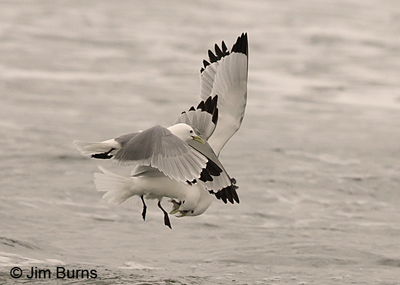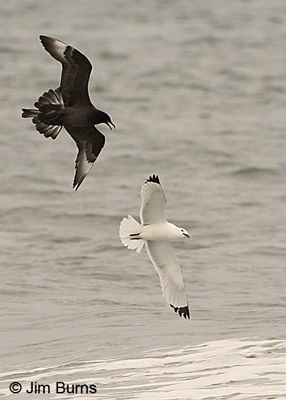
It is 10:30pm. We are heading west toward Nome on the Council Road, most of us only half awake after six hours on the tundra in low 40s temperatures. The gulls are against the setting sun, blending perfectly with the wind driven surf pounding off the Bering Sea. We are abreast of them before we notice, then several hundred yards beyond them before someone sleepily mentions that in a lifetime of birding they have never encountered a feeding frenzy of gulls like this one. Perhaps we should turn around?
Six bird photographers snap instantly awake and the consensus is immediate. Matthew Studebaker, our photo leader, the best at his craft in North America, slows the van to a halt and executes yet another of his well-practiced u-turns on a road barely the width of two cars. Now the gulls are illuminated by the low, setting sunlight, and we see the skein, probably 200 strong, expanding, coalescing, wheeling and banking, individual birds hovering then dropping perpendicularly into the thrashing surf bill first, acting nothing much like gulls, much more like gannets or terns.
The van slows to a stop and doors explode outward, spewing photographers, tripods, cameras, long lenses, perhaps a couple expletives. We hop the roadside vegetation and half run a thigh-burning thirty yards down the sandy beach. The cloud of gulls is “pure,” mostly contrastingly sharp Black-legged Kittiwakes, a few ghostly white Glaucous Gulls, and a couple outlier Sabine’s Gulls. Mew Gulls, the designated “trash” gulls of town, are conspicuous by their absence.
We are almost in the surf with them now, firing away, burst after burst, but the gulls are oblivious to us, driven in their frenzy by two instincts only: the prey fish in the surf beneath them which only they can see, and three jaegers strafing them, coursing frenetically through the flock at will, horizontal dark blurs amidst the vertical columns of white. Some lenses focus on the knots of shrieking, squabbling gulls tumbling over one another in the surf desperately trying to steal from one another. Some swing frantically to follow the erratic flight of the three pirates as they swoop and dive, isolating their victims who have managed to escape the scrum with fish in their bills.
Being birders, not fisheries experts, we are unsure what fish are on the menu. The jaegers appear to be Parasitic, but no one is taking the time right now for positive identification. Images on the monitor will answer both questions, but it will take some time to sort through all of those. As the frenzy finally dissipates and we return to the van, there is a rumor that someone has shot one thousand(!) frames. Adrenaline and the chill wind off the Bering Sea have left us wide awake. We vote for midnight pizza.
In June at this latitude the sun never really sets and bird photographers never really sleep. We have come with expectations of avian vagrants from Siberia, but this is Nome after all, and here along the margins of civilization the unexpected is around every bend in the three gravel roads leading out into the uncharted expanses of tundra wilderness--a Musk Ox herd with calves, a Moose with twins--why not a gull spectacle of the size and duration to provide a once-in-a-lifetime high.
